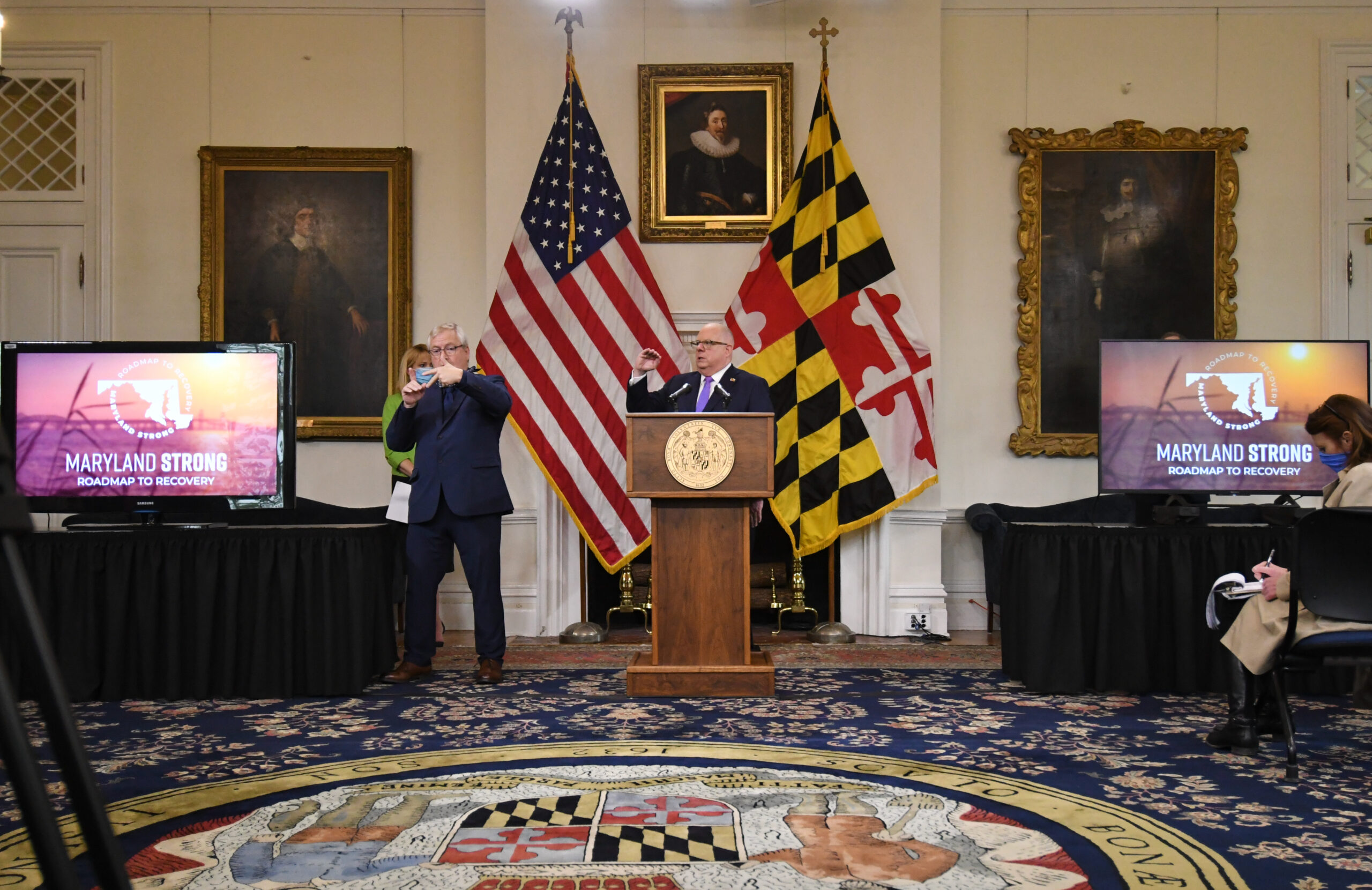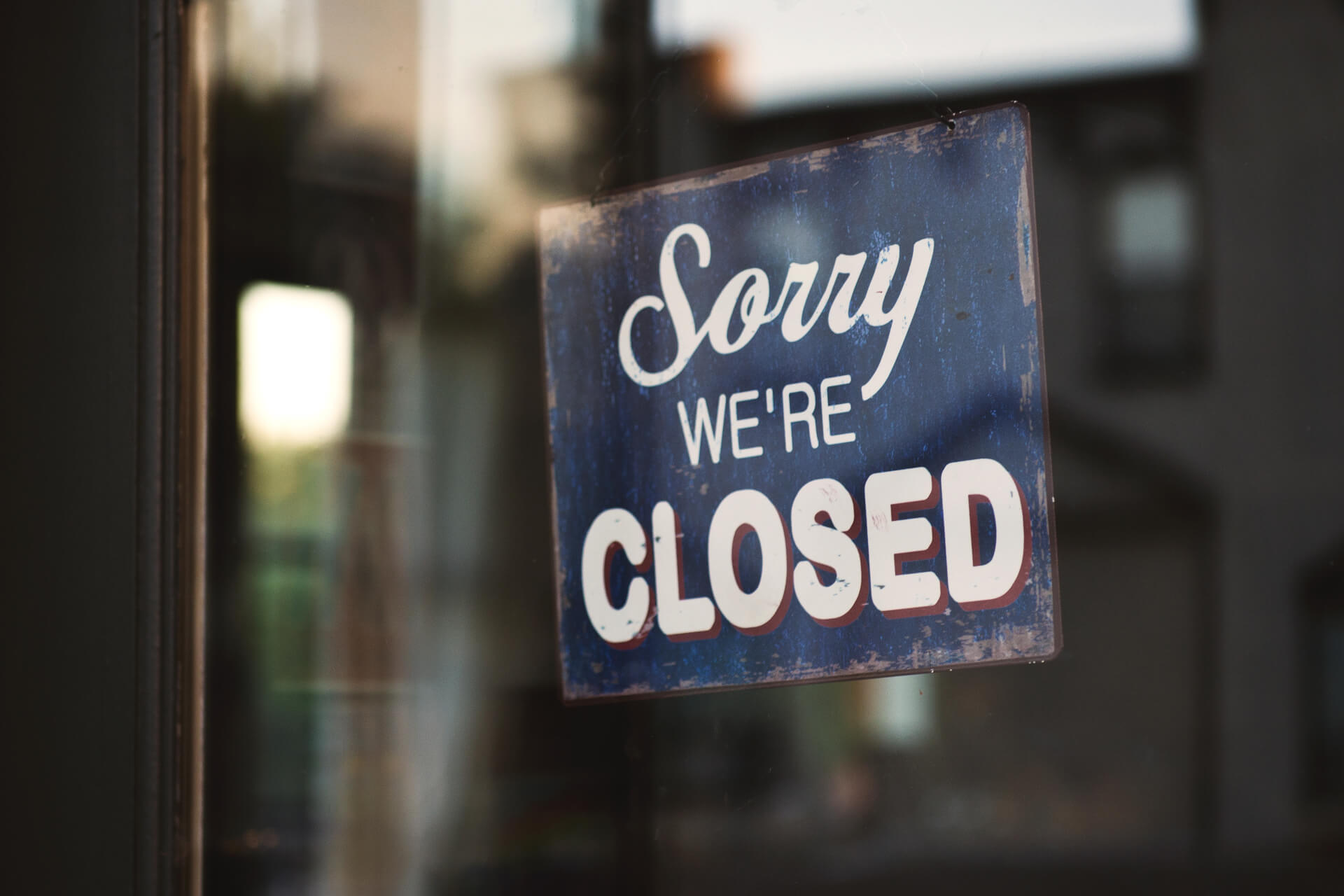Hogan Releases ‘Roadmap’ for Reopening State — But No Definite Timetable Yet

Maryland will pursue a phased approach to business activity, social interaction and recreation, but the timing will be dictated by the state’s day-by-day tracking of its COVID-19 hospitalization rates, Gov. Lawrence J. Hogan Jr. (R) said on Friday.
In releasing his eagerly-anticipated three-part “roadmap” during a State House news conference, he cautioned that a premature rush to resume commerce — or an over-eager return to socializing — would result in a second wave of illness, hospitalization and death.
And until there is a vaccine, life will continue to be different, the governor warned.
“The number of new cases of COVID-19 is still rising here in Maryland,” Hogan said. “Maryland is not yet able to lift our restrictions.”
(See COVID-19 data for Maryland here.)
The governor’s plan for reopening businesses and easing the stay-at-home order will take place in three phases.
In Phase 1, which he said “could” begin in early May, the stay-at-home order would be lifted, many small businesses would be allowed to open and “lower-risk” community activities would resume.
Examples he listed included small retail shops, boating, golfing, fishing, tennis, outdoor religious activities, outdoor fitness and gym classes, and the resumption of outpatient surgeries and hospital procedures in counties with lower coronavirus infection rates.
Phase 1 would also bring flexibility for counties to open parks, playgrounds, recreation centers and libraries — “if they deemed that appropriate safety protocols could be followed,” a reference to the use of masks and social distancing.
If Phase 1 doesn’t result in “a spike in deaths” or ICU use, Maryland could move to Phase 2, the governor said. If hospitalizations see a sustained rise, there are clusters of new infections, or people aren’t complying with social distancing, the state can pause Phase 1 and not advance to Phase 2 until conditions improve.
In Phase 2, a “larger number of businesses would open” and “other public activities would come back online.” Those would include indoor religious gatherings, larger social gatherings, more normal transit schedules, and — potentially — restaurants and bars.
Phase 3 would allow for the return of “higher-risk activities” such as larger social events and entertainment venues, non-emergency hospital care and an end to restrictions on nursing home visits.
For Maryland to reopen, individuals must continue to be vigilant, Hogan said. And they should be prepared to wear masks and avoid crowds until there is a vaccine, which experts have said could take more than a year.
“If we try to rush this, and if we don’t do it in a thoughtful and responsible way, it could cause a rebound of the virus, which could deepen the economic crisis, prolong the fiscal problems and slow our economic recovery,” he said.
Dr. Thomas V. Inglesby, the director of the Center for Health Security of the Johns Hopkins Bloomberg School of Public Health, echoed Hogan’s warnings.
“It’s clear that if we open the state today, we would risk a fast acceleration in the epidemic to very high numbers,” he said. “New daily cases are plateauing. … For the state to move forward in easing social distancing in a lower-risk way, there needs to be a period of declining hospitalization, and ICU stays and deaths from COVID, in Maryland.”
“There isn’t a decline yet,” he added.
In linking the start of the phased recovery to the COVID-19 data that are compiled by the Maryland Department of Health each day, Hogan implicitly rejected the demands from ReOpen Maryland, the group which formed two weeks ago.
ReOpen, one of several groups to spring up around the country, held a noisy protest last Saturday in Annapolis, urging Hogan to allow normal social and business activity on May 1.
The administration has created 15 advisory groups, made up of health experts, business people, religious leaders and nonprofit organizations, to guide the state’s decision-making on when and how to allow for greater business activity and social interaction.
Though he expressed a desire to get his plan moving in “early May,” the governor stressed that it can’t precede a downward trend in the key metrics. “We won’t be able to just flip a switch. Unfortunately, life is not going to just immediately go back to normal. In fact, it is important to recognize that until a vaccine is developed, the way we go about our daily lives and the way we work is going to be significantly different for a while longer.”
Reaction to the rollout of the governor’s plan was generally positive — though there is a desire to see more detail and a wider outreach.

Photo by Tim Mossholder for Pexels.com
Mike O’Halloran, head of NFIB-Maryland, said small business owners who have been forced to close face a “very harsh reality” and are in greater need of “reliability.”
“This is their livelihood,” he said. “Their homes are collateral and if they don’t pay their bills, they are looking at some pretty dire consequences.”
“We understand that the administration is between a rock and a hard place,” O’Halloran added, “but we’re hopeful that moving forward that more details will be released — and in short order.”
ReOpen Maryland was highly critical, however.
“Destroying a state’s economy, restricting civil liberties, and straining families’ emotional well-being requires a far higher level of certainty than ‘guesswork,'” the group said in a lengthy statement. “We advocate for an end to the overly broad, economically and socially destructive shutdown and lockdown policies that have injured countless Maryland families and businesses and had a chilling effect upon civil rights.”
Howard County Executive Calvin S. Ball (D) said he appreciated the governor’s conservative approach to reopening the economy, but he urged a greater voice for local governments — perhaps through the Maryland Association of Counties or the Maryland Municipal League.
“There will be specifics that relate to each of our counties and the City of Baltimore that we need to consider, and I think that we can do that collaboratively, working together,” he said.
Senate Majority Leader Nancy J. King (D-Montgomery) said she was “totally impressed” with Hogan’s approach.
“I’m sure not in any big rush to go running out,” she said. “I want to get ahead of this thing before I’m ready to leave my home and go out and do stuff.”
Hogan said he is relying on a team of advisers that includes Marriott CEO Arne Sorenson, American Enterprise Institute President Robert Doar, Under Armour Executive Chairman Kevin Plank, former FDA Commissioner Scott Gottlieb and Ingelsby.
As of Friday, Maryland reported 16,616 confirmed cases of coronavirus, an increase of 879 from the day before. Nearly 800 people have died (723 confirmed and another 75 considered “probable”), with 24 fatalities occurring in the last 24 hours alone, according to the state Department of Health.
The state’s population centers account for more than half the state’s cases. Prince George’s County had 4,403, Montgomery had 3,227 and Baltimore County had 2,234.
Here is the link to the Hogan plan: https://governor.maryland.gov/recovery/




 Creative Commons Attribution
Creative Commons Attribution